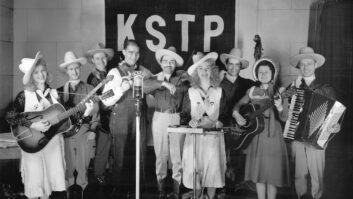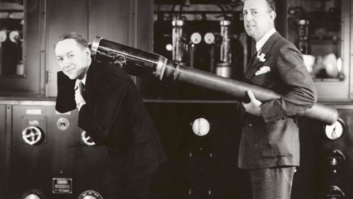KARACHI — From its beginnings as one of Pakistan’s pioneers of FM radio, with broadcasts in three cities, FM100 has grown to now cover nine separate cities and continues to innovate across multiple platforms.

The station was founded in 1994, launching on-air in March 1995 as the country’s first commercial FM station, bringing a new, more youthful style of radio to listeners. Prior to this, only the national public broadcaster, Radio Pakistan, had begun FM transmissions.
NEW STYLE
FM100’s General Manager Operation Qazi Ahmed Mateen explains: “Initially we launched FM radio in three cities — Karachi, Lahore and Islamabad — on 100 MHz. The medium wave and shortwave radio industry was almost dead in our country. We were going to launch FM radio, which was very tough. At the time, there were no smartphones, and no in-car radio — only transistor sets at home. Our station grew more popular day-by-day, and gradually FM radios were installed in cars by auto makers, and also on public transport.”

With new licenses issued by the local regulator, the Pakistan Electronic Media Regulatory Authority (PEMRA), FM100 now broadcasts in nine cities, adding Hyderabad and Rahim Yar Khan in 2012, followed by Gujrat, Abbottabad, Multan, and Jhelum. Around 80 million people can now receive the station, and in total, there are around 145 licensed commercial FM stations across Pakistan, and a further 45 noncommercial.
Mateen believes they brought a completely new style of broadcasting for Pakistan. “The entire package and style of the shows on FM100 was catered towards the new generation of listeners in the country,” he said.

“It concentrated on the youth, introducing creative and innovative programs to cater to their tastes and preferences. The RJs [radio jockeys] at the station had also managed to touch the hearts of radio listeners throughout the country, and had successfully attracted a sizeable audience away from other forms of electronic entertainment media,” he explained.
FM100’s RJs were a hit, and the station now provides live entertainment programs around the clock, as well as promoting Pakistani music, coupled with regular programs featuring Urdu pop, Panjabi and western music, the latest film hits, poetic ghazals and folk songs.
LOCALLY BASED
Mateen says that more than 70 percent of its broadcasts are locally based. “All cities have local studios and music libraries; the radio jockeys speak their language, so listeners in each city have their own station. Advertising clients also want some of the content to be aired on our complete network, which we distribute via the internet.”

The challenges of covering such a large country are clear. “As Pakistan’s geography is divided into four provinces and Azad Kashmir, the local languages spoken in these regions are different, but the national language is Urdu,” Mateen said. “Our programming at the nine stations are in Urdu language, plus a few hours of English music and some programs are in local languages, to give a local taste by playing local-language music, and promoting local trends.”

The FM100 studios include Arrakis ARC-10 audio mixers, with a variety of microphones including those from Behringer, Shure and Samsung. Playout comes from a Dell PC with audio cards from Creative Labs and M-Audio, coupled with Omnia Audio Omnia-3 Turbo processing. From the studio, audio is sent via a Sielco STL to transmitters from Crown Broadcast, Eddystone and Elenos.
The station can face challenges sourcing and replacing this equipment, with many of the main equipment suppliers not having nearby outlets. “We have to purchase backups of all our equipment, along with accessories to run our transmission without any problem” said FM 100’s Mateen.

“Because if any parts are faulty we have to be able to replace it immediately, and then order another from abroad as backup, which can take four to six weeks at least. It increases not only our investment in equipment, but it makes it very difficult to decide when we want to add new technology.”
As well as traditional FM transmission, the station’s audio is available via phone lines. Mateen explains this service is popular in the areas where there are no radio signals and no internet. “Different mobile and landline operators provide these services through their IVR (Interactive Voice Response) services; the user has to dial the number provided by the operators and they can listen to the live radio. The station must have the contract with the operators and the service is not free — the user has to pay the charges at a set rate per minute. It also provides revenue to the radio station and the operator.”

Alongside this, the station has now expanded its reach through the internet. “FM100’s social media activities aim to engage the maximum audience. We update Facebook and our web pages to provide all the information to the audience and clients about the station — daily schedules, presenter profiles and archives. Live streaming is available to those who are not in the range of the airwaves making the radio station global, where it can bring the station and Pakistan to the world,” he concluded.







